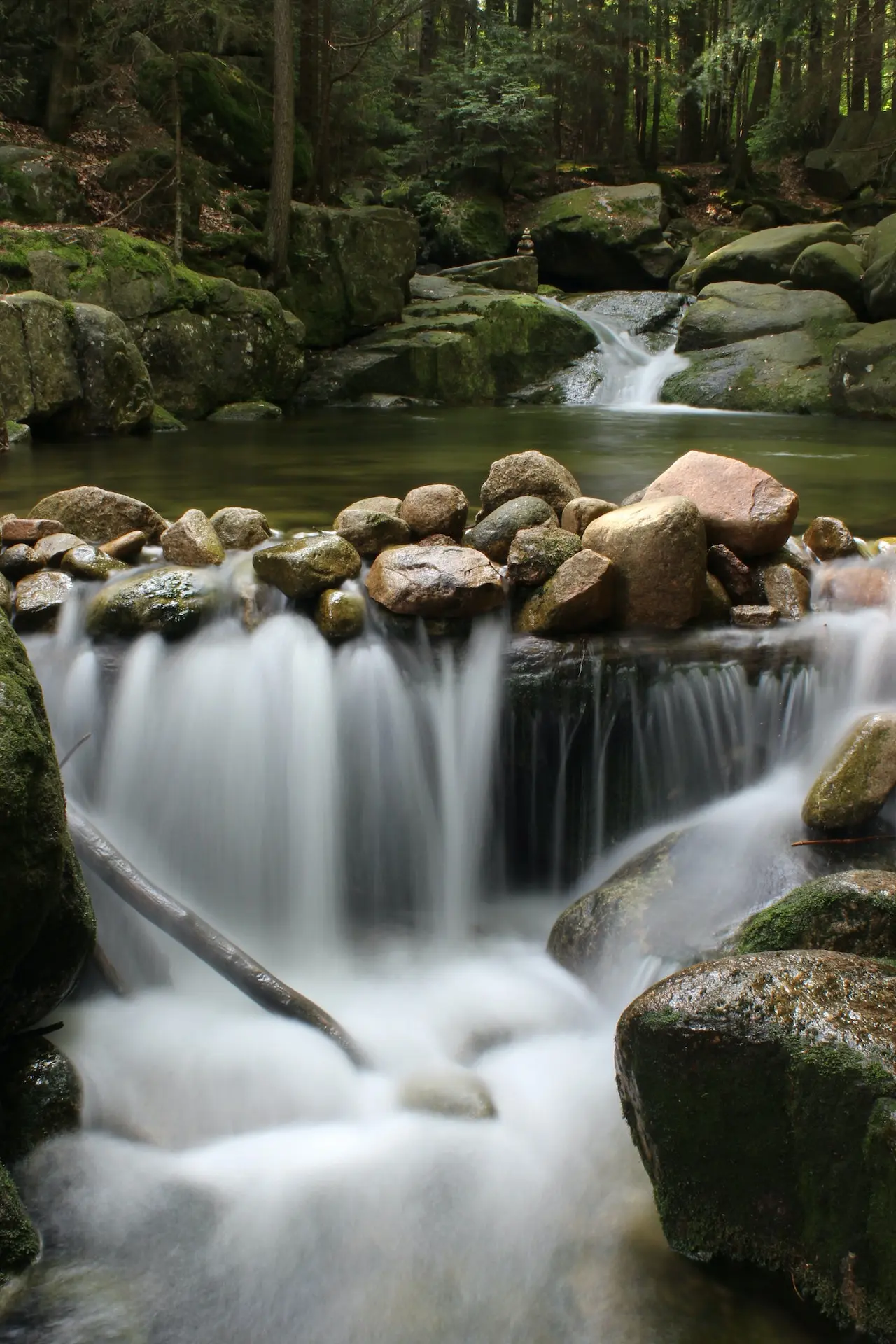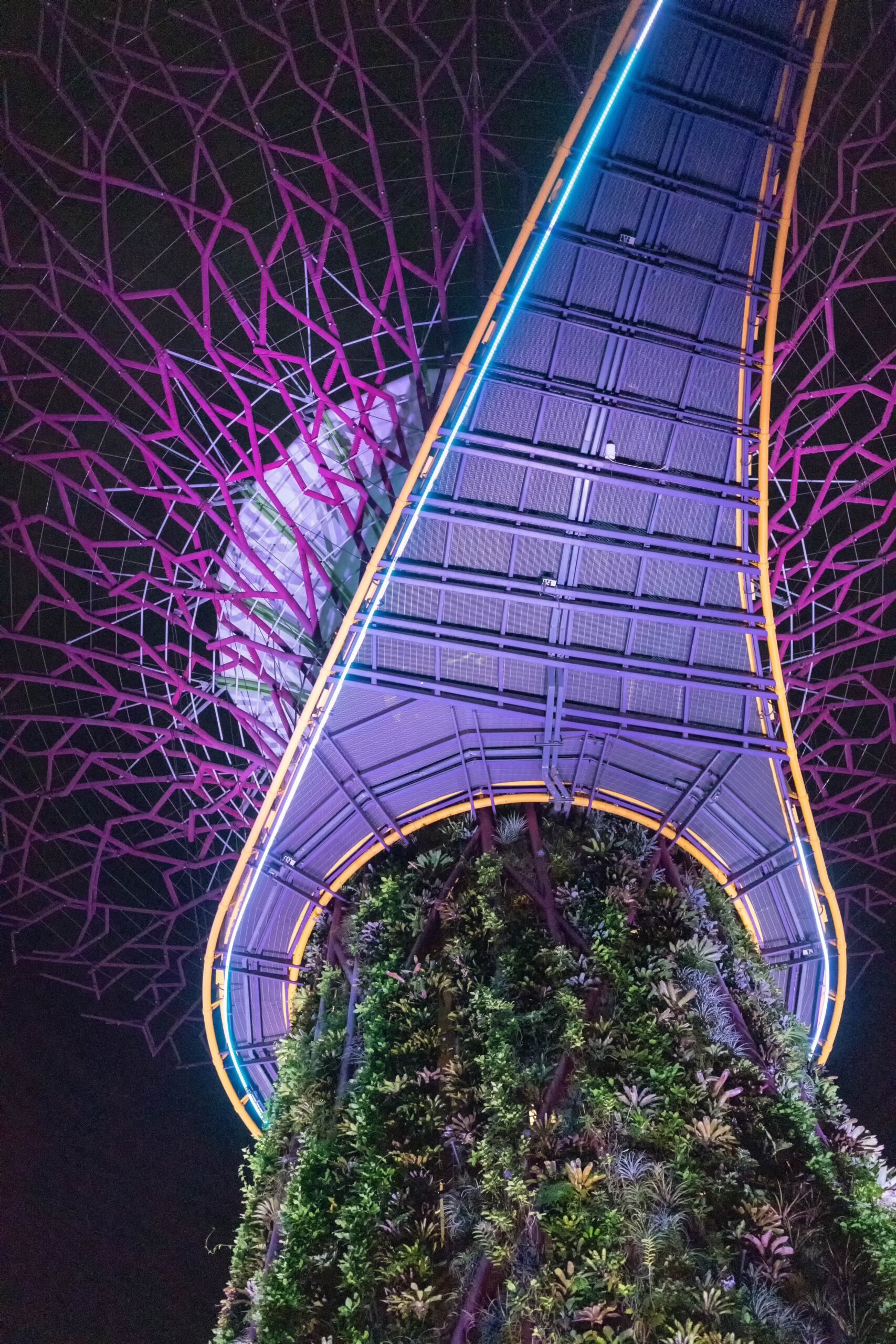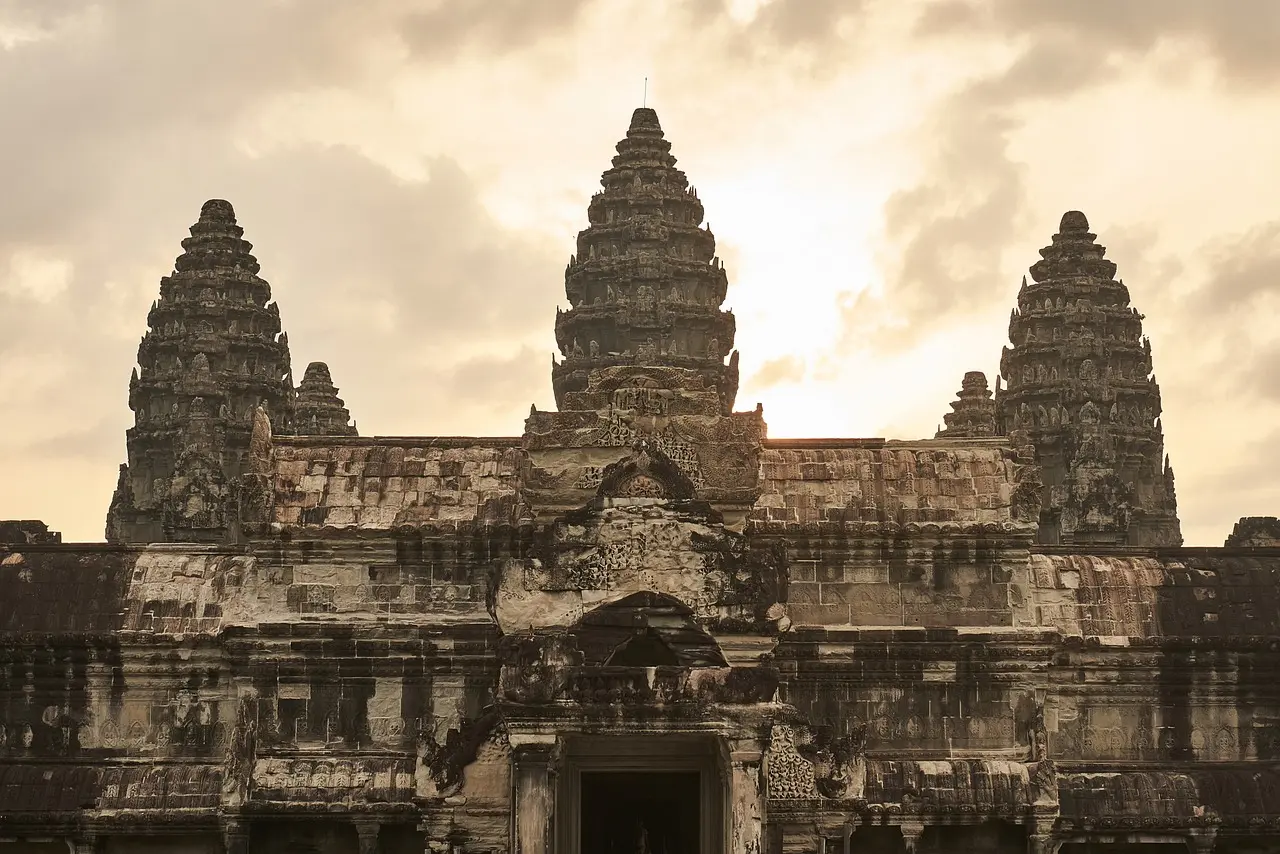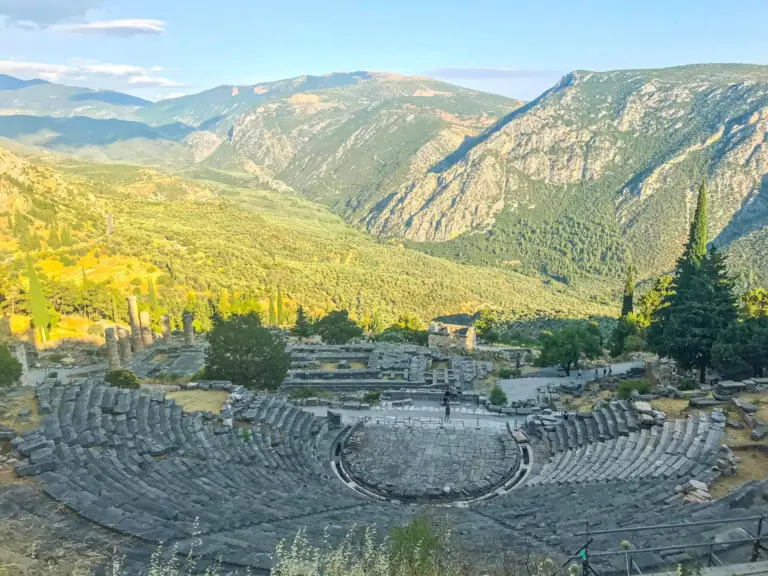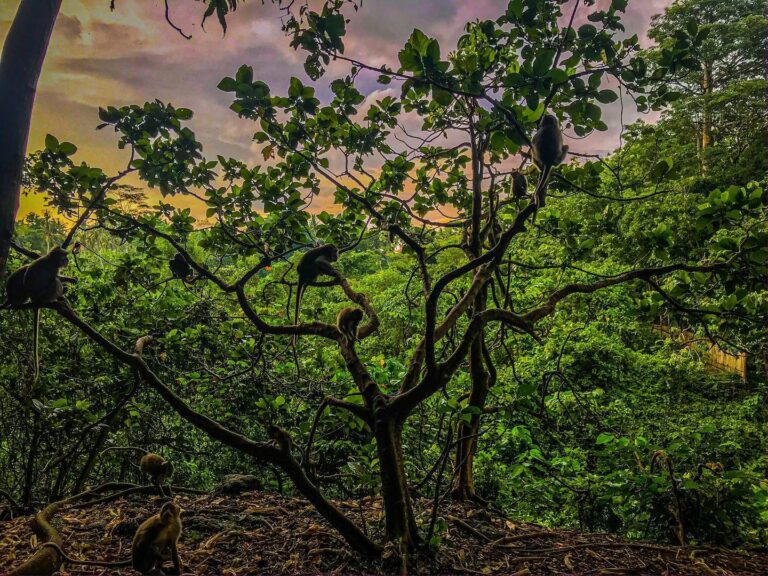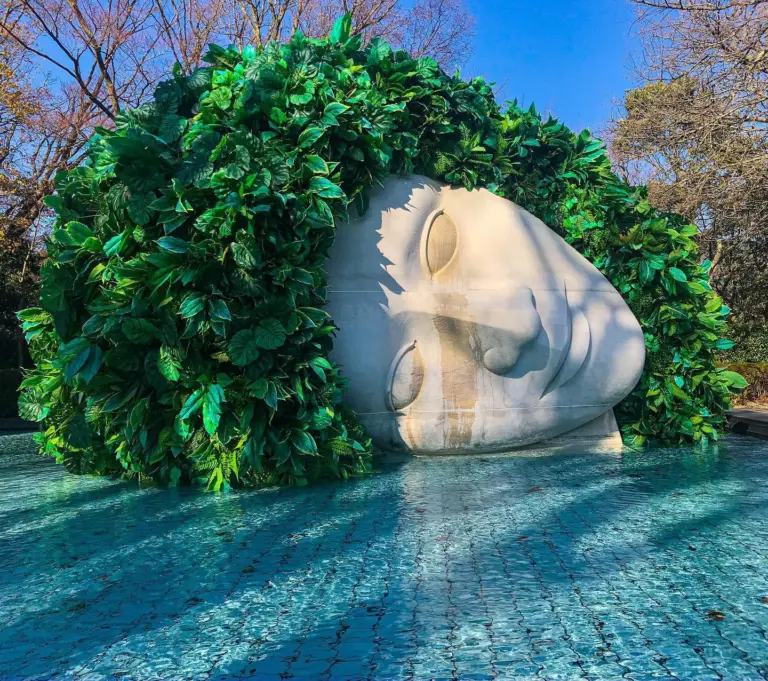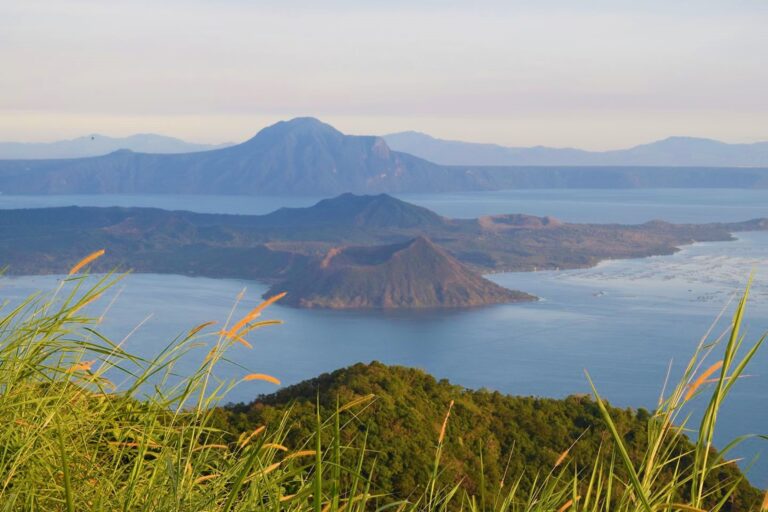Kamakura is often hailed as Japan’s spiritual hub and once you step foot in it, you’ll quickly see why.
Right off the bat, you’re greeted by the grandeur of the Great Buddha, sitting majestically and one of the most iconic landmarks of Kamakura. But hey, that’s just the start.
Kamakura is an experience that’s just more than that, the real magic of Kamakura is in its hidden gems – tiny temples tucked away in the forests, secret gardens that make you feel like you’re stepping into a painting.
In this article, you’ll find a self-guided walking tour that will bring you not only to the must-see places but also to the off-the-beaten-path temples that are guaranteed to blow you away!
Not to mention there will be plenty of supplemental information and lore to further enhance your experience as you traverse through the spiritual trails of Kamakura.
Table of Contents
Toggle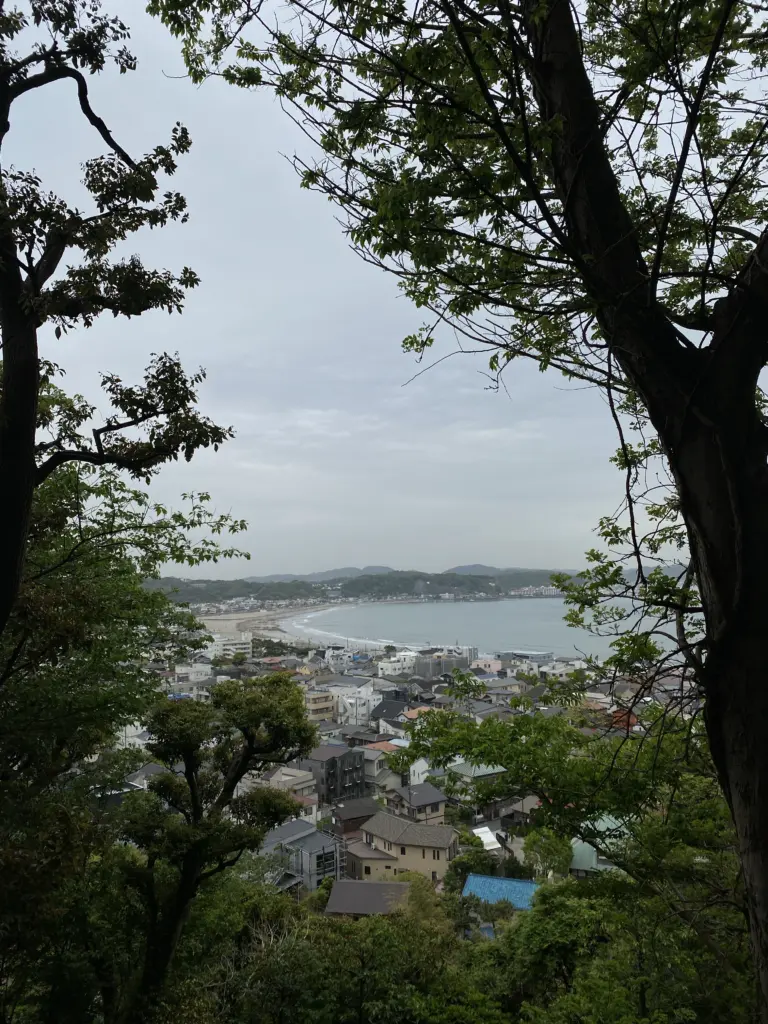
History of Kamakura
Kamakura’s story is one of power, spirituality, and transformation.
It all began in the late 12th century when the city emerged as the political center of Japan under the leadership of Minamoto no Yoritomo. He established the first shogunate, the Kamakura Shogunate, in 1192, marking the beginning of the samurai rule in Japan.
This period, known as the Kamakura Period (1185–1333), was a time of significant change. It was during this era that the samurai class rose to prominence, shaping the social structure of the country. The city of Kamakura became the heart of this new warrior-led government, and its influence extended across Japan.
But Kamakura wasn’t just about the samurai. It was also a cradle of Japanese Buddhism. Major Buddhist sects, such as Zen, Jodo (Pure Land), and Nichiren, found a home in Kamakura. This era saw the construction of many temples and shrines, including the famous Great Buddha of Kamakura (Kotoku-in) and the serene Hasedera Temple, which still stand today.
The Mongol invasions of Japan in the late 13th century were pivotal events during the Kamakura Period. The city played a crucial role in organizing the defense against these attacks, which ultimately failed, thanks in part to the famous “kamikaze” (divine wind) that is said to have helped repel the invaders.
However, the Kamakura Shogunate’s power began to wane in the early 14th century, and it eventually fell in 1333, marking the end of the Kamakura Period. The city then experienced a period of decline, but its cultural legacy continued to flourish as you can see for yourself.
How to Get to Kamakura
-
From Tokyo by Train: The most common and convenient way to reach Kamakura from Tokyo is by train. There are two main options:
-
JR Yokosuka Line: Direct trains from Tokyo Station to Kamakura Station. The journey takes approximately 1 hour and is covered by the Japan Rail Pass if you have one.
-
Odakyu Electric Railway: From Shinjuku Station in Tokyo, take the Odakyu Line to Fujisawa Station, and then transfer to the Enoden Line to Kamakura. This route offers a scenic train ride but may take slightly longer, around 1.5 hours.
-
-
From Yokohama: If you’re coming from Yokohama, the JR Yokosuka Line is again a convenient option. The train journey from Yokohama to Kamakura takes about 30 minutes.
I recommend getting the Enoshima-Kamakura Freepass by Odakyu Electric Railway is an economical choice for exploring Kamakura and Enoshima. Valid for one day, it costs 1,640 JPY from Shinjuku and offers unlimited rides within the designated area, including the Enoden Line. The pass includes round-trip travel on the Odakyu Lines to Fujisawa station and exclusive discounts at selected local establishments. It can be purchased online or at Odakyu stations. There is also the Hakone-Kamakura Pass which also covers Hakone.
If you have a Japan Rail Pass, you can use it on the JR Yokosuka Line to get to Kamakura, making it a cost-effective option if you’re already planning to purchase the pass for travel in other parts of Japan.
Kamakura Self-Guided Walking Route
This is exactly the route that my friend and I did which took us from morning until sundown, so prepare yourself for a full day of walking with plenty of sight-seeing in between. This itinerary is designed to keep impressing as the day goes on, saving some of the best temples for last so you’re not underwhelmed by the smaller hidden gems in between. It’s also optimized to be as efficient as possible in the and you can find the Google Maps walking directions here.
We never felt rushed while doing this route though you will feel it in your legs, so feel free to adjust the itinerary however you see fit!
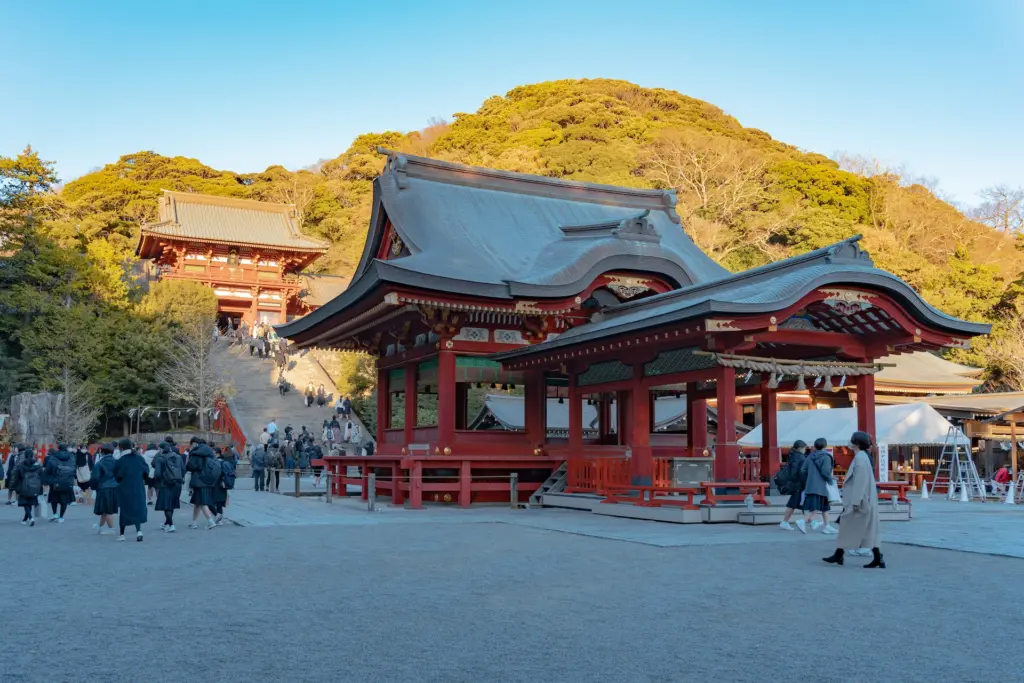
1. Tsurugaoka Hachimangu
As you approach from Komachidori Street, you’ll find the imposing Tsurugaoka Hachimangu perched atop a hill. Know that from here on out, you’re entering one of Kamakura’s most significant spiritual sites.
Founded in 1180 by Minamoto no Yoritomo, this Shinto is dedicated to Hachiman, the god of war and the patron deity of the Minamoto samurai clan. The shrine’s strategic location along a direct path to the sea symbolizes the powerful connection between the spiritual and the ruling powers of the time.
Notice the grand staircase leading to the main hall, or Hongu, a path that has seen centuries of pilgrims.
As you explore, take in the smaller details – the sub-shrines, the serene lily ponds, and the museum within the complex.
We were lucky to have witnessed a traditional Shinto wedding ceremony with full on instrumental accompaniment, the flute-like instrument known as “Shakuhachi” sounded so ancient, it gave me goosebumps.
There was also this circular straw gate-way called a Chinowa where we were tol to go around it several times in a symbol of infinity while carrying a paper human-shaped doll (katashiro). This was a purification ritual known as “Chinowa-kuguri.” We then placed the paper dolls on our body and blew on it before putting in the box. The doll was said to absorb all negativity from our bodies.
We went to the main temple to pray and saw some floats where the kami (gods) were enshrined before going to the next temple.
Cost: Free
2. Enno ji
A couple of minutes away was Ennoji Temple, a Buddhist temple dedicated to Enma, the King of Hell.
The fragrance of incense wafted through the air as we approached the temple. Outside stood Jizo (Ksitigarbha), the Boddhisatva of the Underworld. It was a good time to introduce them to the friend who was with me at that time, Aim, and he was quite keen on learning as well.
Enma, also known as Yama in other Asian cultures (a prominent figure in Hindu mythology as well), is a figure who judges the souls of the deceased. At Enno-ji, you’ll find a giant statue of Enma, illustrating his role in determining the fate of souls based on their actions in life (karma). If you’ve ever visited Noboribetsu, you’ll find another shrine there dedicated to him. Quite fitting as that’s where Jigokudani or the Hell Valley is.
In addition to the statue of Enma, Enno-ji also houses statues of the Ten Judges of Hell, each responsible for judging different aspects of human behavior according to Buddhist beliefs. You’ll find them flanking the right and left sides of Enma.
Cost: 200 JPY
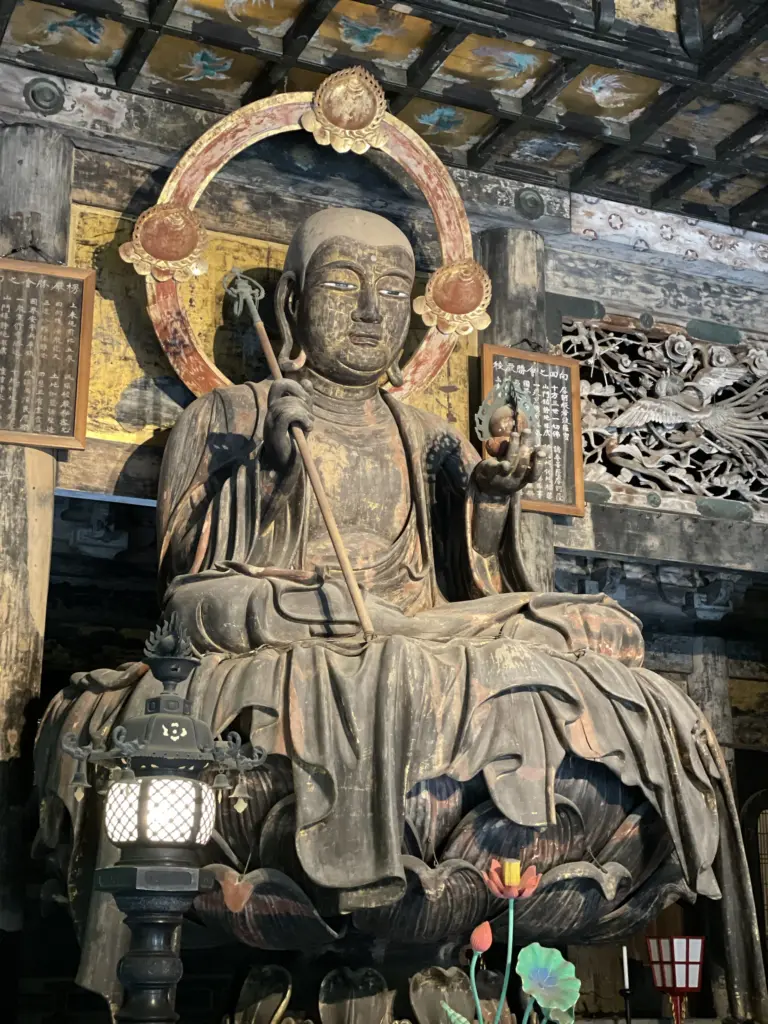
3. Kencho ji
We went to Kenchoji Temple next, another Buddhist temple but this time at a much larger scale.
Kencho-ji is the first of Kamakura’s five great Zen temples and is considered one of the most important Zen Buddhist temple complexes in Japan. Founded in 1253 by the priest Rankei Doryu under the patronage of Hojo Tokiyori, the ruling regent of the time, Kencho-ji marks the introduction of Zen Buddhism from China to Japan, playing a pivotal role in the spread of Zen throughout the country.
As you enter the temple grounds, the first thing that might catch your eye is the Sanmon, the main gate, which is a designated Important Cultural Property. This gate is a symbol of entering a sacred space, leaving the mundane world behind.
We went to the left side first where there was a cemetery. The main temple had a giant Jizo was enshrined, one of the best I have ever seen in my life. Tip: To help you recognize, Jizo is often seen holding a rod on his right hand and a jewel on his left.
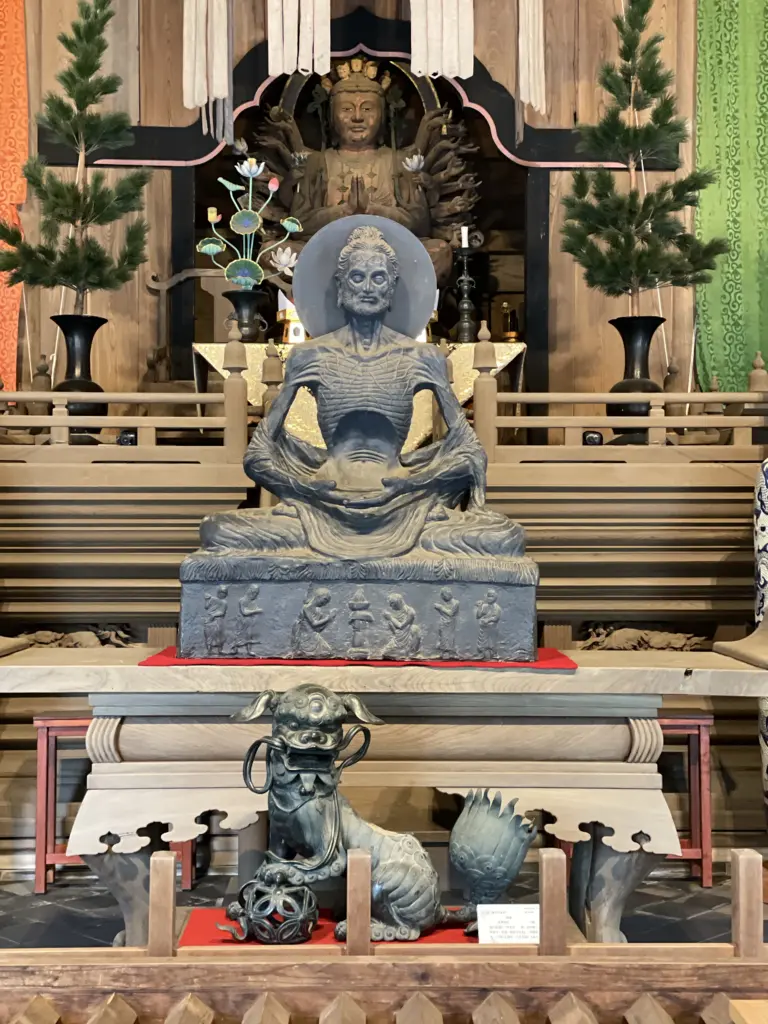
At the back was another temple dedicated to Amitabha Buddha with Shakyamuni Buddha in front of him. We went deeper to find a Zazen meditation session on-going with the chanting of the lead monk accompanying us as we circled around to the Zen garden. A great way to experience some wabi-sabi in action.
On the way back, I also got to introduce the goddess Kannon to Aim, who is the Japanese equivalent of the Bodhisattva of Compassion, Avalokiteshvara. In Chinese cultures, she is known as Guan Yin, a prominent figure in Mahayana Buddhism, which also happens to be the prominent school of Buddhism in Japan.
Kencho-ji also functions as a working monastery. It’s common to see monks engaged in their daily activities, in fact, there was a monk in black robes giving a sermon right at the entrance when we got there.
Cost: 500 JPY
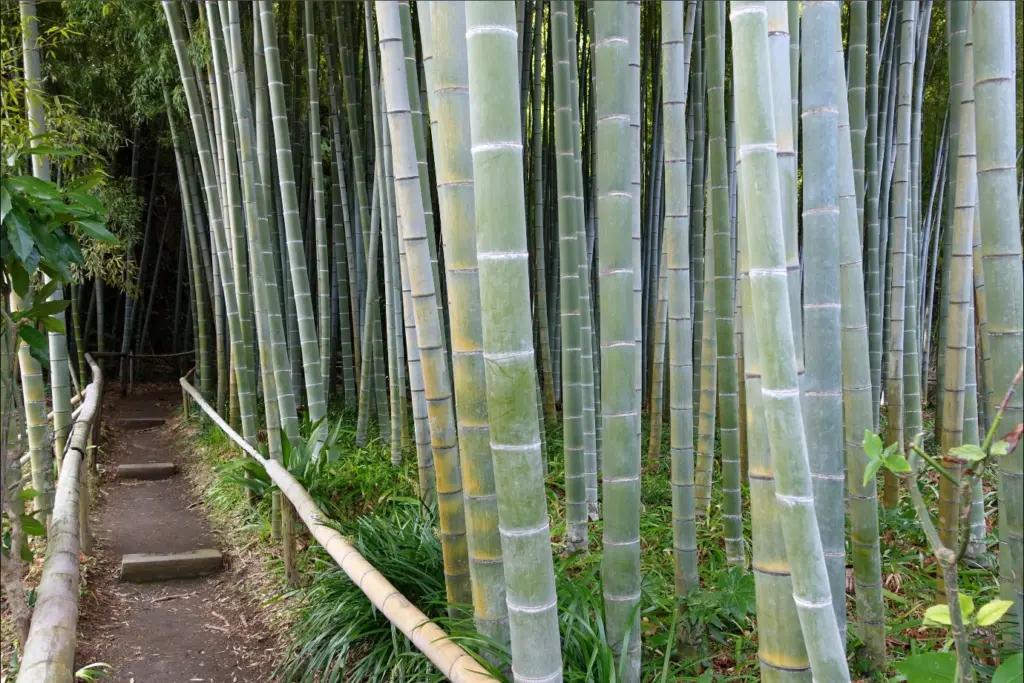
4. Eisho Ji
We went to Eishoji temple next, a smaller and lesser-known temple but the main sight here was the bamboo grove and wisteria trees that Aim was quite a fan of due to the Kimetsu no Yaiba anime.
Eisho-ji is quite special being the sole nunnery of Kamakura. This temple was established in the 17th century, during the Edo period, and has a history intertwined with the ruling Tokugawa clan. It was founded by a woman named Eishoin (Lady Okaji), a concubine of Tokugawa Ieyasu, the first shogun of the Tokugawa shogunate.
As a nunnery, Eisho-ji provides a glimpse into the role and life of women in Japanese Buddhism, which is often less highlighted in the predominantly male-monk centered narrative.
Cost: 300 JPY
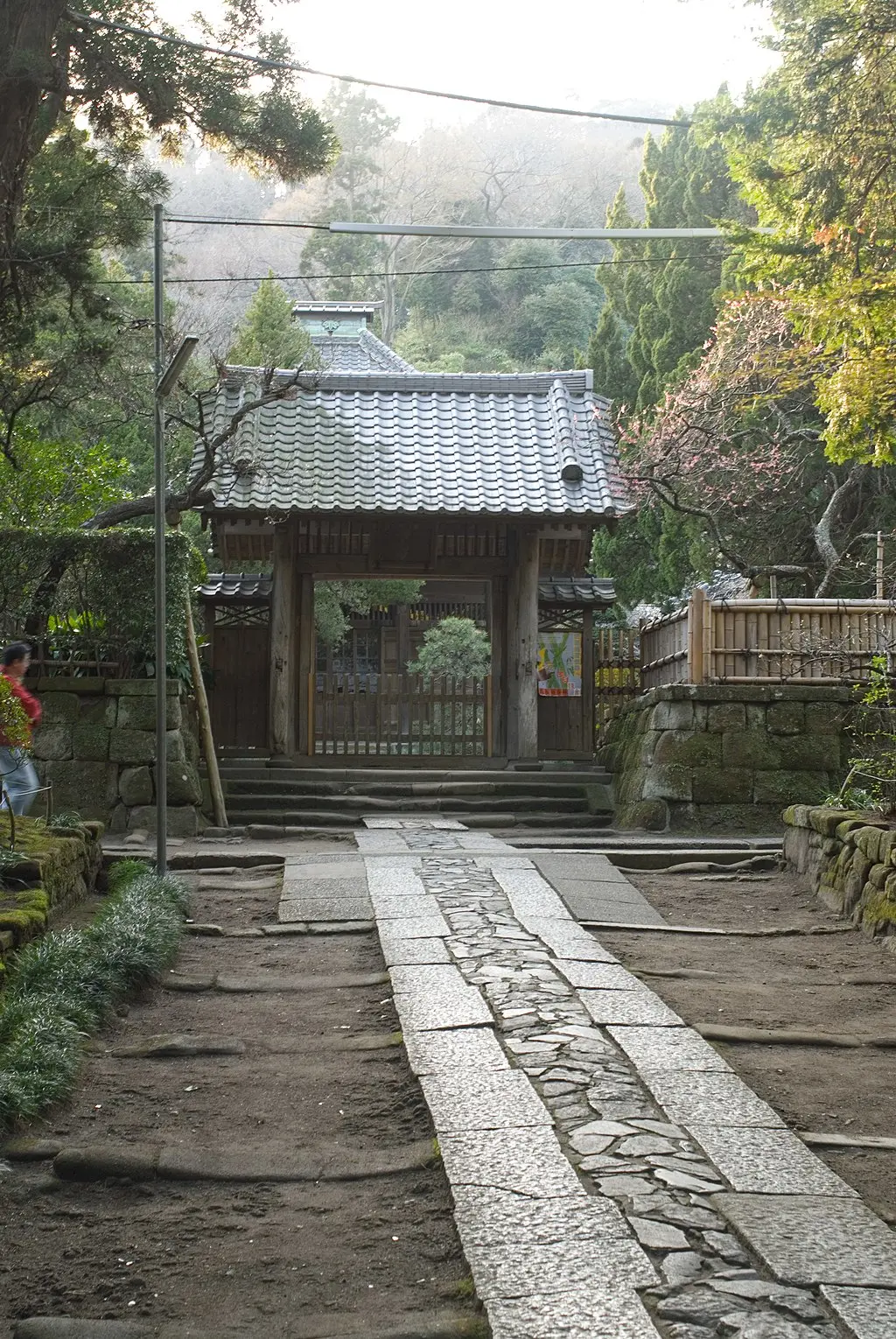
5. Jufuku Ji
Nearby was Jufukuji, another small temple which thankfully was free unlike the rest of the other temples so far. It was situated deep inside the forest with mossy cobblestones, it reminded me of the jungle temples around Angkor Park in Siem Reap. We just a quick look as we couldn’t enter.
Still, it’s worth noting that Jufuku-ji is one of the oldest Zen temples in Kamakura. Founded in 1200 by the priest Myoan Eisai, who is credited with introducing Rinzai Zen Buddhism to Japan, Jufuku-ji holds an important place in Japanese Buddhist history.
The temple’s main hall, though rebuilt several times over the centuries due to fires and natural disasters, retains an atmosphere of antiquity. Inside, you’ll find a statue of Shaka Nyorai (the Historical Buddha), which is a focal point for worship.
Cost: Free
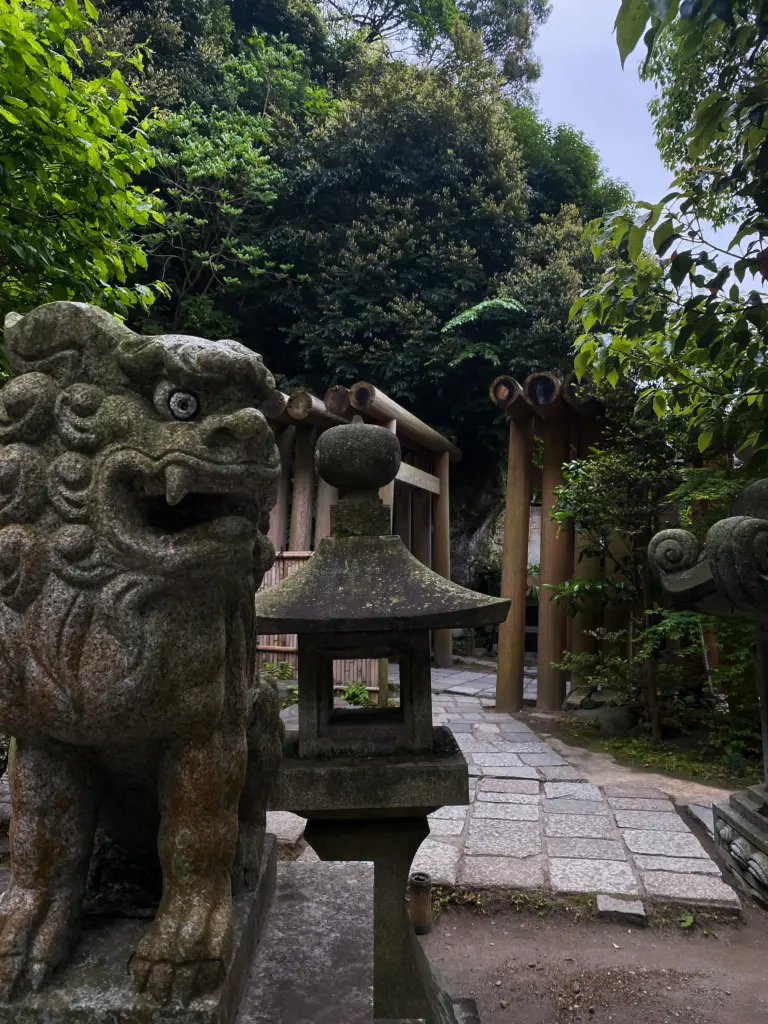
6. Zeniarai Benten Shrine
On the way to Zeniarai Benten Shrine, we stopped by Sasuke Cafe which was one of the few restaurants around the area. The cafe had really nice aesthetics and amazing matcha tea which was a perfect way to recharge.
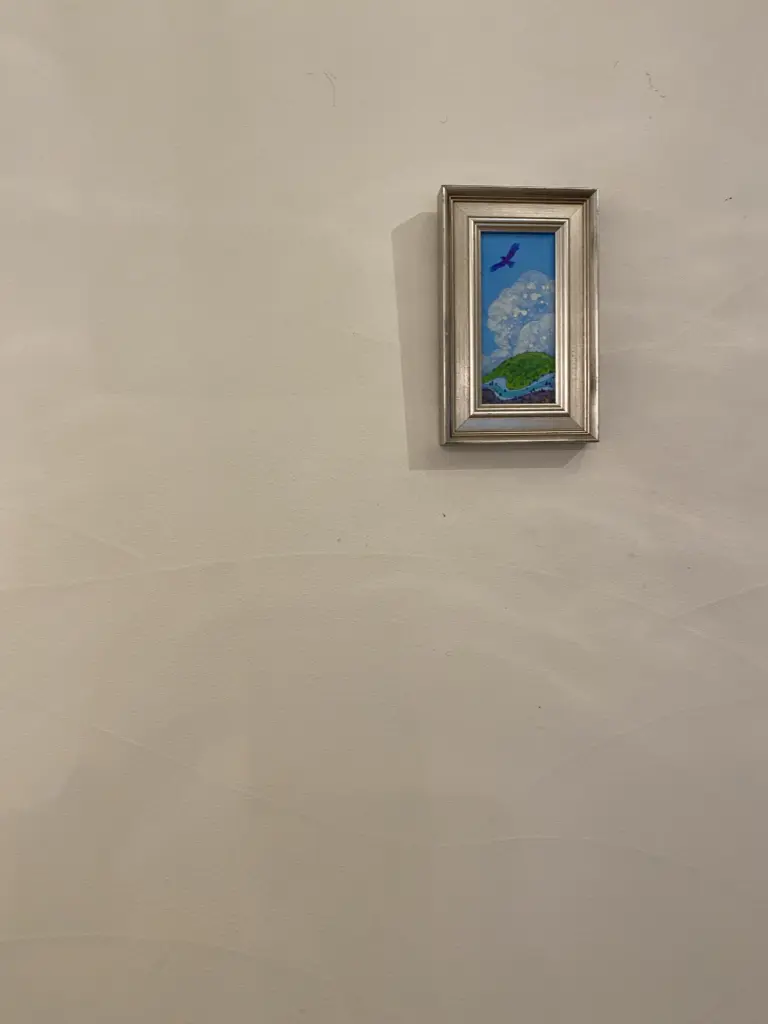
The next few stops from here on out are some of the main highlights of Kamakura, right nearby was Zeniarai Benzaiten Shrine, a Shinto shrine dedicated to one of the Seven Lucky Gods, Benzaiten who is the Goddess of Fortune. Originally derived from the Hindu goddess Saraswati, she is still seen carrying her lute (biwa) even in the Japanese Buddhist tradition.
Her shrine was tucked away up above a hill and deep inside a cave which led to a scenic valley where the sprawling temple complex waited. With numerous wooden torii gates, we knew we were entering into a highly spiritual place.
We went to the right side first where there was a shrine dedicated to all Seven Lucky Gods, there was also a waterfall and a koi pond. The shrine was pretty unique because it had a special practice.
People came here to wash their money in the sacred waters of Benzaiten which was believed to bring abundance and multiply wealth. It was a fun cultural experience so Aim and I opted to try it out, we got the woven basket and a candle and incense. The candle was the easy part but the incense took forever to light up, we then went to another cave to pour the water and prayed for success in our business endeavours.
We decided to keep the washed over bill as good luck charms. This practice stems from a legend that Yoritomo, the first shogun of the Kamakura Shogunate, himself established the shrine and performed this ritual to bring peace and prosperity to his people.
Architecturally, Zeniarai Benten Shrine blends Shinto and Buddhist elements known as Shugendo, reflecting the beautiful syncretic nature of Japanese religious practices.
Cost: Free
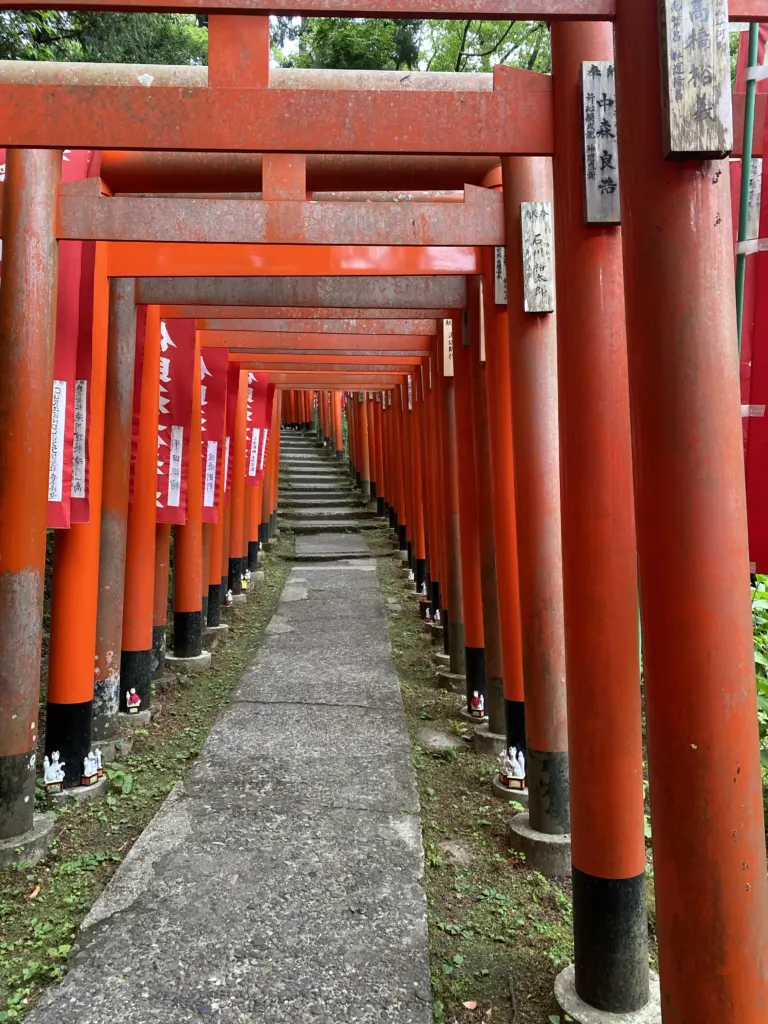
7. Sasuke Inari Shrine
Sasuke Inari shrine was another major Shinto temple near Zeniarai Benzaiten shrine.
Hidden away in a small valley, Sasuke Inari Shrine is known for its association with Inari, the Shinto god of rice, fertility, tea, sake, agriculture, industry, and general prosperity. Inari shrines are easily recognizable by their red torii gates, and Sasuke Inari Shrine is no exception, with a path lined by numerous small red gates that create an ethereal atmosphere. If you can’t make it to Kyoto‘s Fushimi Inari, I would say Sasuke Inari provides an amazing experience as well.
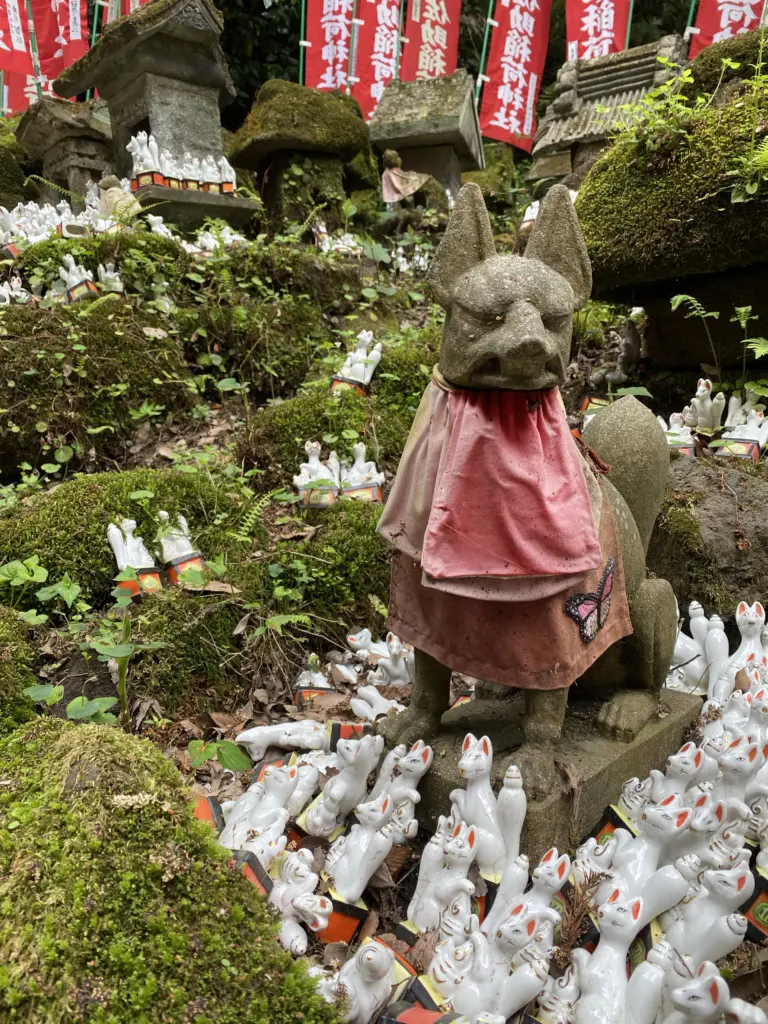
The fox (kitsune) is an iconic symbol for her and they are known to be Inari’s messengers. The numerous red torii gates leading up to her shrine had a lot of tiny foxes sitting around the columns. The main shrine was really something else, with hundreds or even thousands of foxes placed all around.
There was also a cave with a tiny shrine in the middle of the pond with a singular fox inside. They really know how to create a vibe.
The origin of Sasuke Inari Shrine is steeped in legend. It’s said to have been founded after a fox appeared in the legendary warrior Minamoto no Yoritomo’s dream and helped pave way for victory against his enemies. Following his victory, Yoritomo established the shrine in gratitude.
Cost: Free
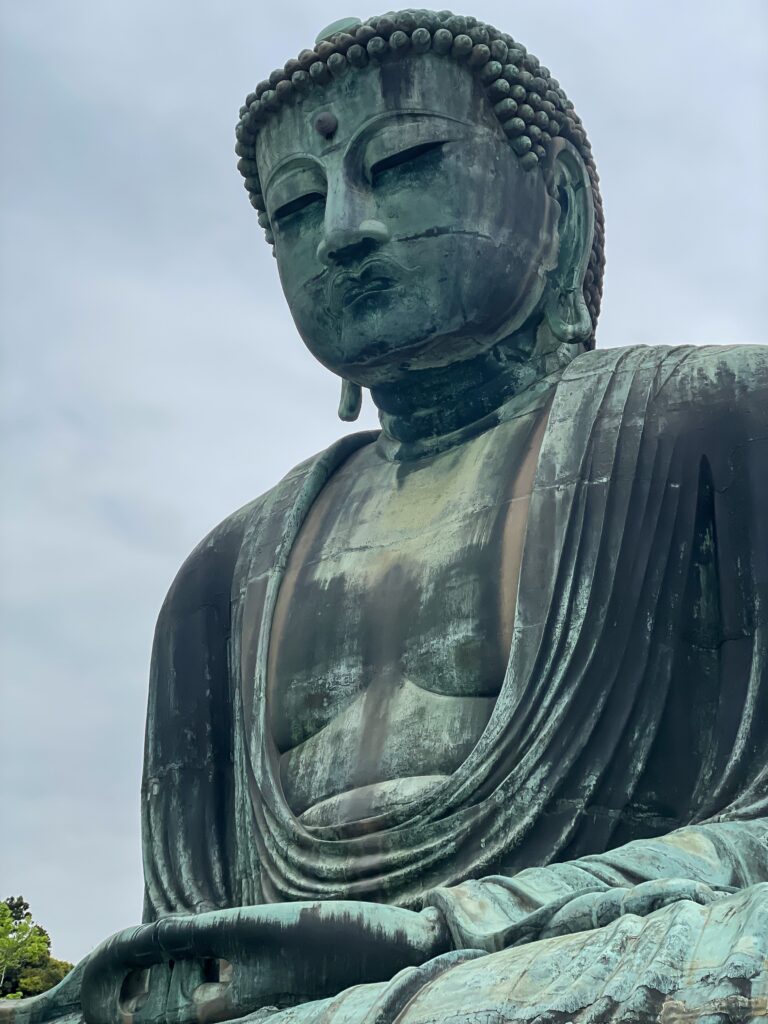
8. Kotoku-in
Kotoku-in. This temple is famously known for its monumental outdoor bronze statue of Amitabha Buddha or Amida Buddha in Japanese. Easily one of the most iconic landmarks of Japan.
Kotoku-in is a Buddhist temple of the Pure Land sect, and its history dates back to the early 13th century. However, the Great Buddha for which Kotoku-in is renowned was constructed later, in 1252. This colossal statue, known in Japanese as “Daibutsu,” stands at approximately 11.4 m (7 ft) in height and is an impressive sight. If you have ever heard of the Namo Amida Butsu mantra in Japan, it’s for this guy right here.
The Daibutsu while originally housed in a large temple hall, has stood in the open air since the late 15th century, when a tsunami washed away the wooden structure. The resilience of this statue, having withstood natural disasters including earthquakes and typhoons over the centuries, says a lot.
Cost: 200 JPY
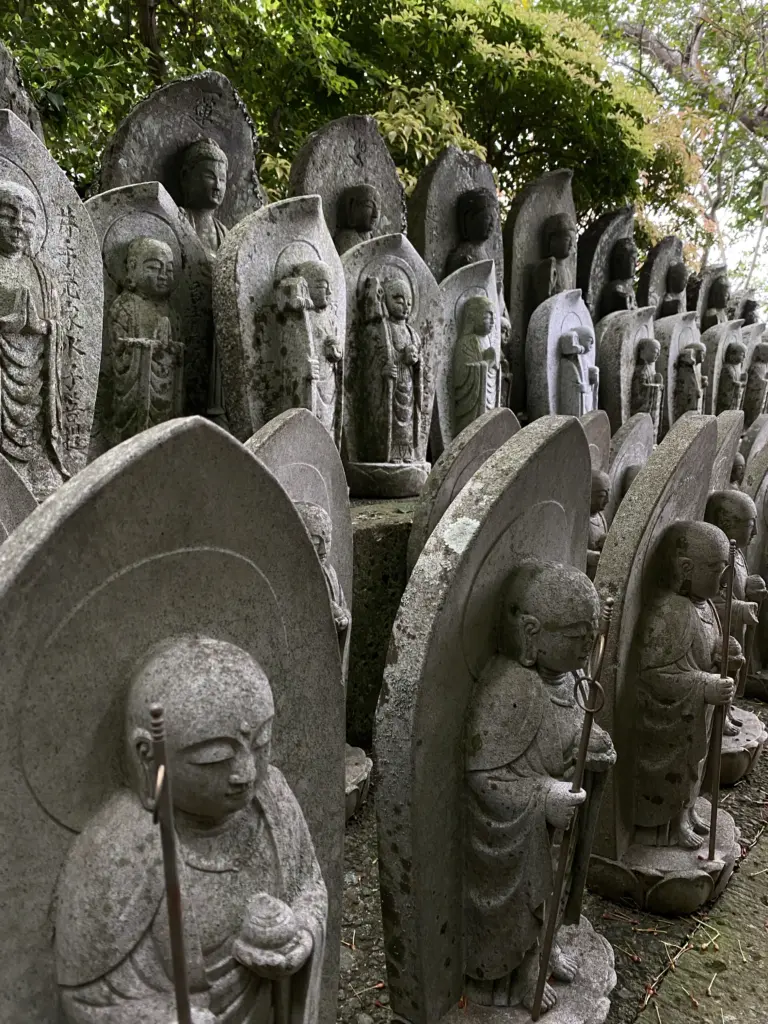
9. Hasedera Temple
Finally, we went to Hasedera temple, saving one the best temples for last. Hasedera Temple, often known as Hase Kannon Temple, is renowned for its gigantic wooden statue of Kannon, the aforementioned Goddess of Mercy.
Founded in the 8th century, Hasedera Temple is primarily dedicated to Kannon. The statue housed here is one of the largest wooden sculptures in Japan, standing at nearly 9.18 m (30 ft) tall. This eleven-headed Kannon statue is an object of deep reverence, believed to have the power to grant wishes and bring comfort to people. Do note that photos aren’t allowed inside.
Hasedera temple was probably the biggest temple complex of the day and another syncretic temple, as in it was both a Shinto and Buddhist temple.
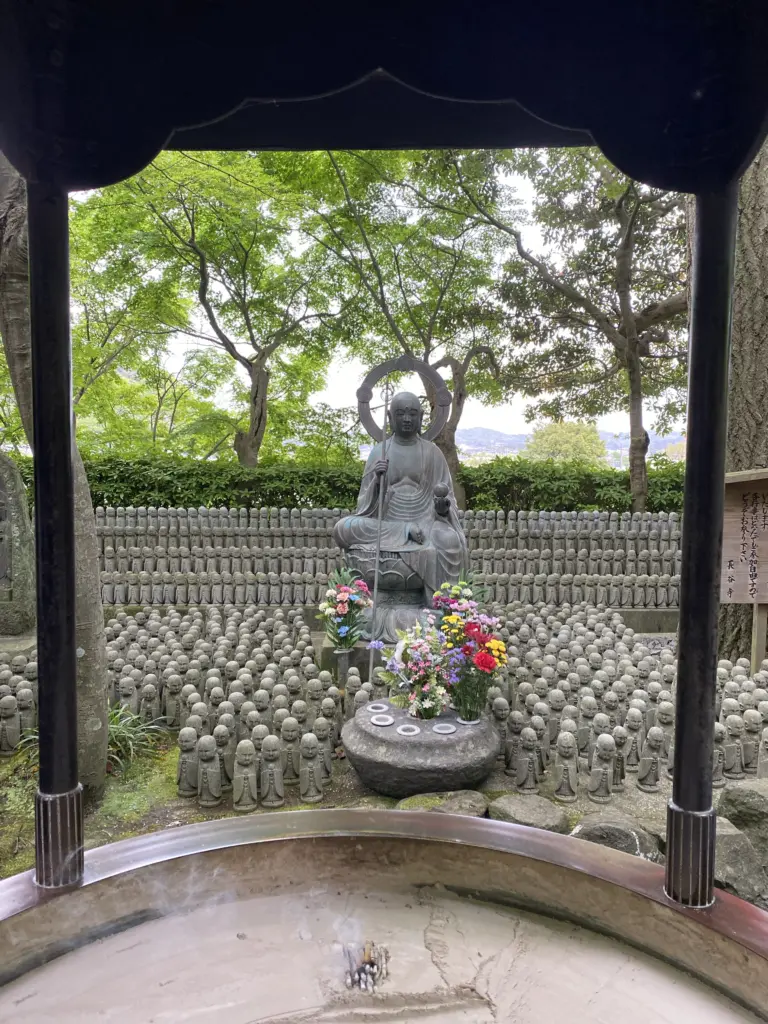
From the entrance, go up the stairs to find the Jizo-do Hall. What’s so breathtaking here is that this time there were hundreds of tiny Jizo statues all around, with some more bigger ones towering above them. Behind the shrine were even more Jizo statues, the most I have seen in my life! You’ll find offerings of toys at the main shrine as Jizo is also known as a protector of children.
We went higher up and passed by the main temples to check out the outlook platform first, with amazing views of Kamakura and the ocean. We also passed by a temple with prayer wheels where if we span it, we could gain the benefits of the whole sutra that’s carved on the wheels, so of course we did them.
We did another smaller hike above to get even better views of the ocean. Outside Kannon’s main temple was a statue of a monk where it was believed that by touching the body part of the monk would also heal the afflicted body part of oneself.
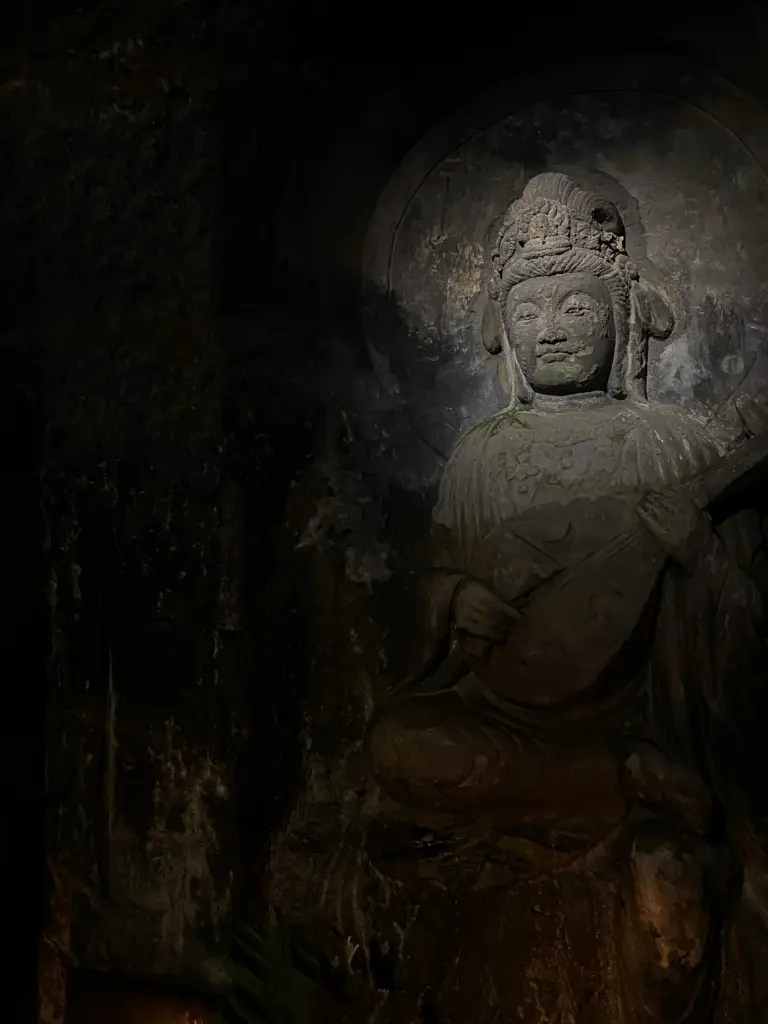
The temple complex also includes a cave, known as the Benten-kutsu Cave temple for Benzaiten. Inside were stone carvings along the cave walls of Benzaiten and there were also hundreds of tiny Benzaitens on the lower cave platforms.
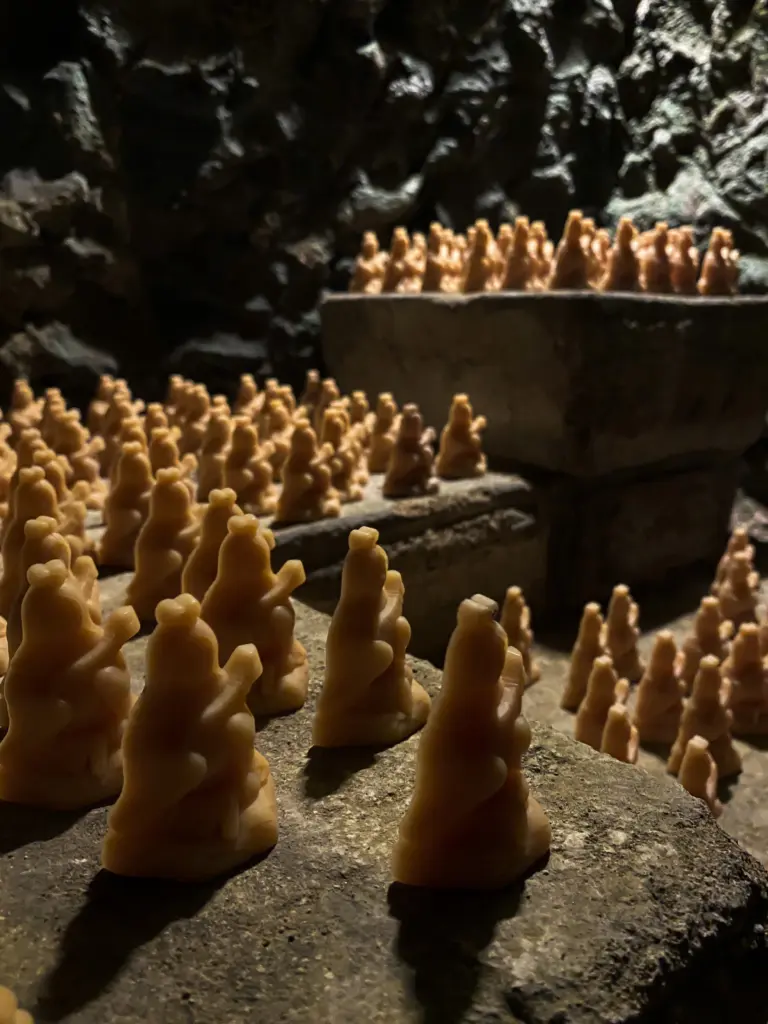
Further back below were temples to the Seven Lucky Gods with statues of all seven of them which the first I’ve ever seen! (Did you know that the Matroyshka Doll in Russian culture was said to be inspired by the set of the Seven Lucky Gods?)
There was also a giant wooden Daikokuten statue, one of the Seven Lucky Gods, outside with his mallet and smiling face, apparently touching it was good luck.
We had a lot of luck and blessings today it seems like, I felt really good.
Cost: 400 JPY
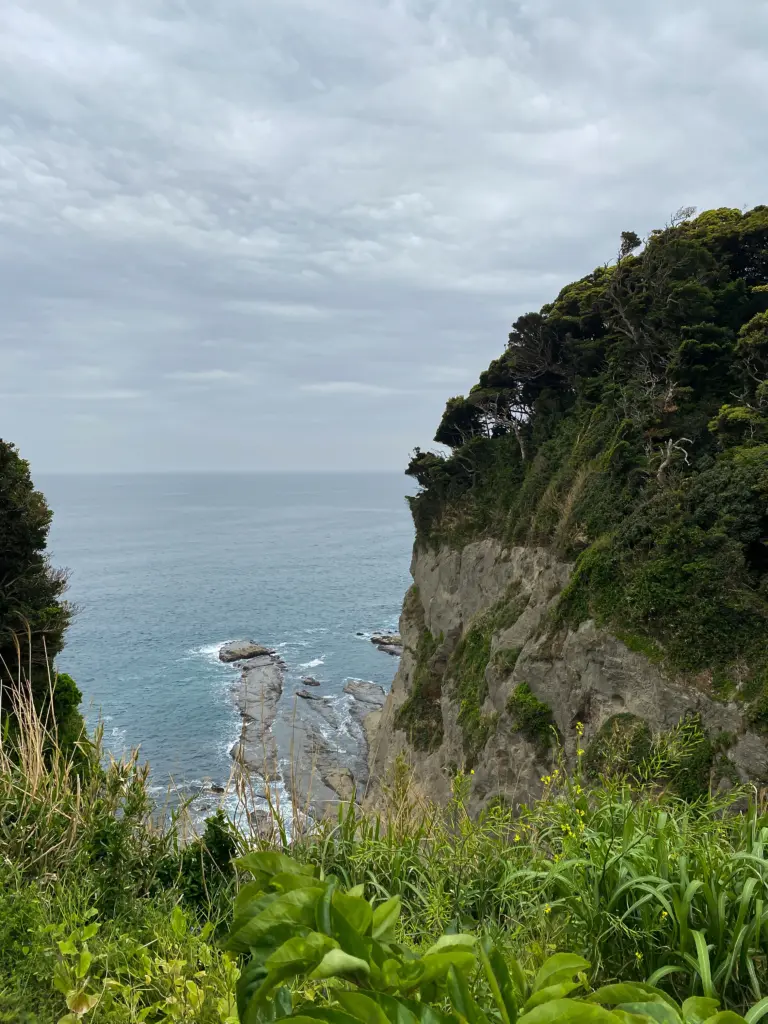
10. Enoshima
We wanted to end the day strong so we took the Enoden Train going to Enoshima. I had originally still wanted to walk all the way there passing by Yuigahama Beach but I was a bit worried that we wouldn’t make it to the Iwaya Cave Temples on time since it closes around 17:00.
Enoshima was also one of the cat islands of Japan and Aim had really wanted to see one. He got his wish not long after when a black cat showed up to play. I was feeling peckish from all the walking as well so we stopped by for a quick snack, I ordered some takoyaki while Aim got fried octopi.
We passed through a shrine inside a cave with a dragon mounted on top. Going down towards the coastal side, we finally got amazing views of the ocean. We were just in time to line up for the caves.
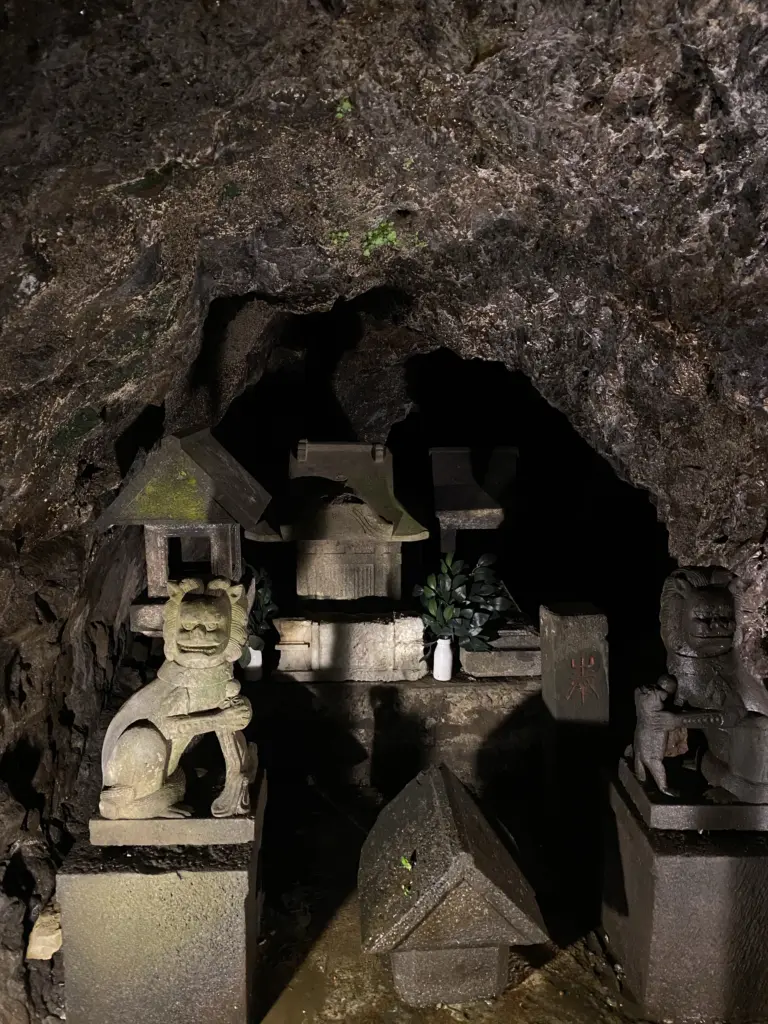
One of the many caves we went to today but this one was the best, it was huge and formed naturally due to the ocean tides. It was dedicated to Benzaiten as well, and through this cave, I really got a better understanding of her role in Japan.
There was a legend with Benzaiten and Enoshima where long ago, a dragon resided here and Benzaiten reformed it. A monk then built the first shrine of Enoshima inside the caves here. The cave itself was said to be connected to the ice caves all the way to Mt. Fuji.
Iwaya caves were an immersive experience, there was a projection mapping on the cave walls with the pond acting as a reflection that showed the lore of the island. To the left path, we were give candles to carry as we went deeper, with cave sculptures of different Buddhist characters such as Benzaiten, Kannon and Amida.
To the right side was a path going outside into the coast, leading to another cave. We were able to see some amazing god rays which somehow made Aim’s day. The right cave had a sculpture of the dragon where by clapping in front of it, a sound from behind imitating the roar would be played. All in all, it was an amazing day in Enoshima.
If you’re planning on spending a day in Enoshima instead, you can check out the Enoshima Travel Guide as there’s plenty of other sites to see here including the famous Sea Candle.
Cost: Free
11. Kamakura Kokomae Station
For fans of the Slam Dunk anime, you can stop by the Kamakura Kokomae Station as the Enoden train to and from Enoshima will be passing by here.
We went back for Aim’s photo with Kamakurakokomae Station so he could finally get that dream shot.
The station itself is quite scenic, with the tracks running parallel to the beach, you’ll actually find plenty of photographers here, Slam Dunk fan or not.
Cost: Free
Where to Stay in Kamakura
If you’re planning on staying the night in Kamakura, you’re in for a treat. As one of the cultural heritages of Japan, a lot of the traditional ryokans and hotels here provide an intimate and quality experience. Here are some of the most recommended places to stay:
Best Hotels in Kamakura:
- Kamakura Cocon – stands out as an exceptional place to stay, combining traditional Japanese hospitality with modern amenities. It offers free private parking, a hot tub, and comfortable accommodations. Each room at this ryokan is well-equipped with air conditioning, a flat-screen TV with streaming services, a kitchenette, and a private bathroom with a hot tub. You can enjoy additional conveniences like a 24-hour front desk, free Wi-Fi, a restaurant, and even yoga sessions.
- Kakiya Ryokan – just a 3-minute stroll from Enoshima Beach, offers an authentic Japanese stay with tatami-floored rooms and traditional futon bedding. Esteemed for its cleanliness and comfort, this ryokan boasts amenities like free Wi-Fi in the lobby, a 24-hour public bath, and a renowned restaurant specializing in Shirasu fish meals.
- Hotel Metropolitan Kamakura – a distinguished 4-star hotel. This hotel offers air-conditioned rooms with modern amenities including a flat-screen TV with satellite channels, an electric tea pot, a bidet, complimentary toiletries, and a closet. Each room is also equipped with a safety deposit box, and some offer city views. The hotel’s multilingual staff at the 24-hour reception are fluent in English and Japanese, ready to assist.
Best Hostels in Kamakura:
- Enoshima Guest House – opened in October 2016, is a charming hostel embracing a concept centered around sea-loving travelers, this guest house offers a variety of accommodations suitable for solo travelers, couples, and families. It features an on-site restaurant, a shared lounge, an outdoor terrace, and activities like table tennis and board games. You can also rent bicycles to explore the area.
- Guest House Kamejikan – offers a blend of traditional Japanese and modernity. This non-smoking guest house, set in a building that’s 92 years old, provides both simple Japanese rooms with futon bedding on tatami floors and dormitory-style bunk beds, all with free WiFi and shared shower facilities. Amenities include air conditioning, a communal fridge, PC access, free coffee/tea, a coin launderette, and 24/7 showers. You can also rent bicycles, bodyboards, and yukata robes.
- Kamakura Rakuan – is a non-smoking establishment that features a garden, free WiFi, and a shared lounge. The hostel provides practical amenities like a shared kitchen, babysitting service, and luggage storage. Each air-conditioned room is equipped with a fridge, oven, coffee machine, and free toiletries, sharing a bathroom with a hairdryer. Ideal for outdoor enthusiasts, the area is great for hiking and cycling, with bike rentals available on-site.
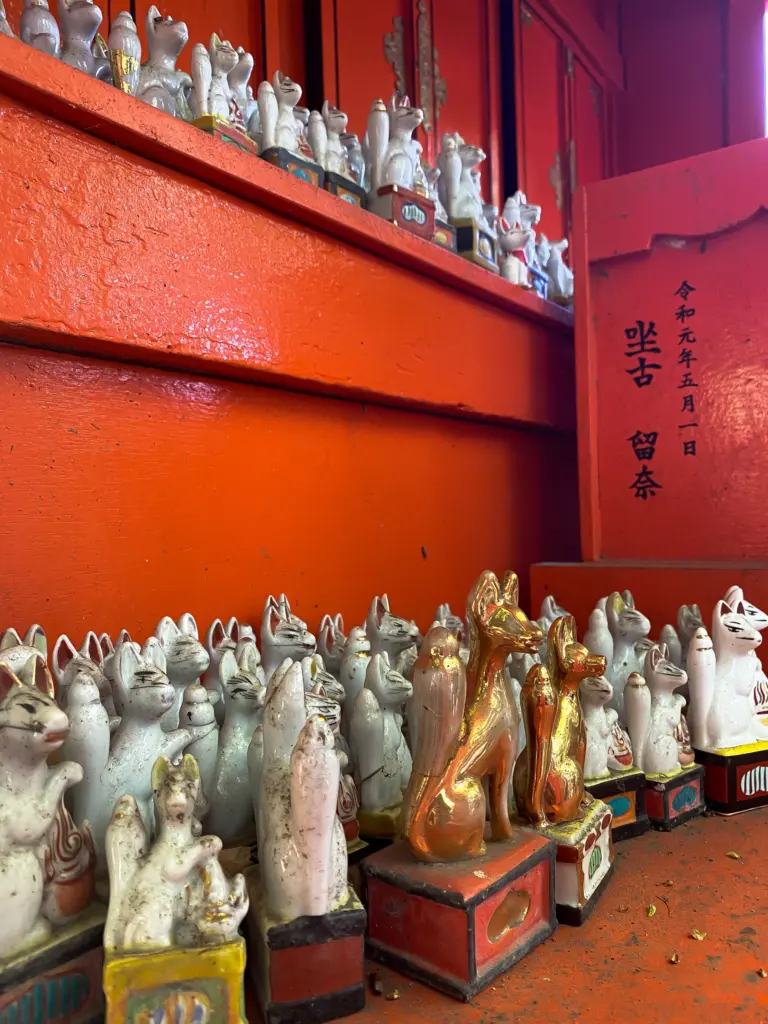
How to Get Around Kamakura
Getting around Kamakura is relatively easy, thanks to its efficient public transportation system and the city’s walkable layout. Here are the main ways to navigate through Kamakura:
Train: The train is one of the most convenient ways to reach and explore Kamakura. The JR Yokosuka Line and the Enoden Line are the two primary rail services in the area. The JR Yokosuka Line connects Kamakura with Tokyo and Yokohama, making it easy to reach from major cities. Once in Kamakura, the Enoden Line is a charming local train line that runs between Kamakura and Fujisawa, passing through Enoshima. It offers a scenic ride along the coast and stops at several key attractions.
Walking: Kamakura is a compact city, and many of its attractions are within walking distance of each other, especially around the central area near Kamakura Station. Walking not only allows you to see the sights at your own pace but also lets you discover hidden gems like small temples, shops, and cafes.
Buses: There are several bus routes that cover the main attractions. The bus network is extensive and can take you to places that are less accessible by train, such as some of the hillside temples.
Bicycles: If you’re not bringing your own, there are several rental shops near Kamakura Station. Biking gives you flexibility and the ability to cover more ground than walking. It’s particularly enjoyable along the coastal roads.
Tours: For those who prefer an organized approach, there are guided tours available that visit both Kamakura and Enoshima such as this one.
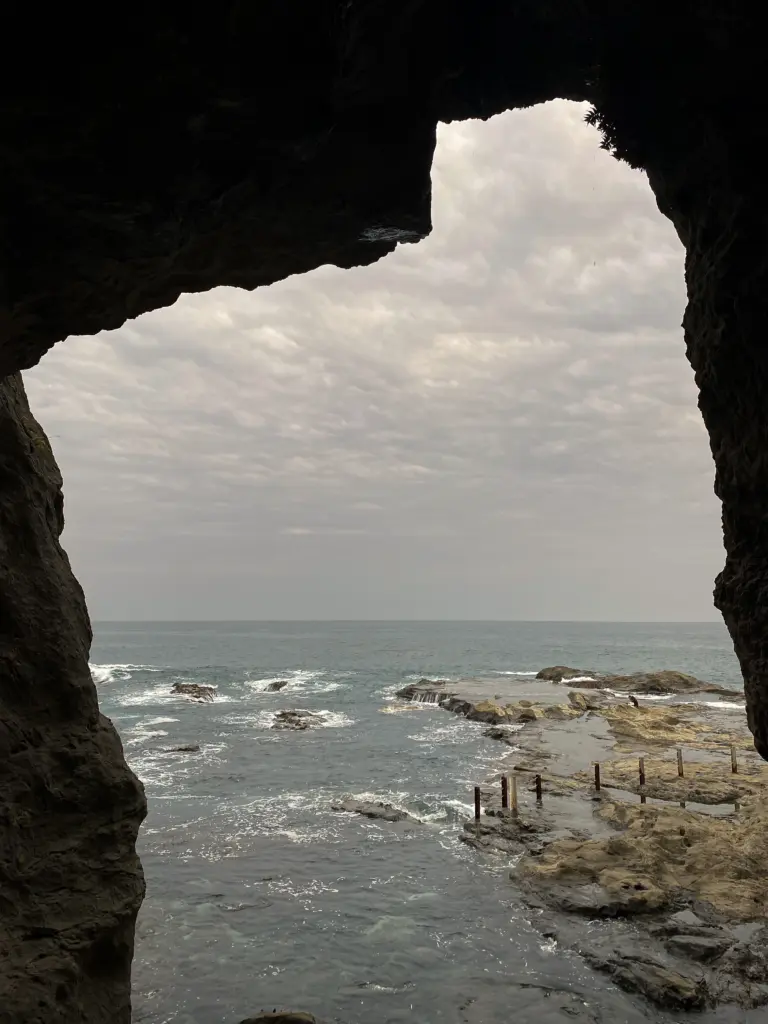
Best Time to Visit Kamakura
The best time to visit Kamakura is in the late spring, particularly from late April to early May. This time of the year is ideal due to the comfortably mild weather, with temperatures typically ranging between 15°C – 22°C (59°F – 72°F), which is perfect for exploring the city’s numerous outdoor attractions. Additionally, after the peak cherry blossom season in early April, the crowds start to diminish, in fact we were there during this time.
If you’re considering other seasons, each has its unique charm. To be honest, Kamakura is beautiful in any season.
Summer in Kamakura, from June to August, brings warmer weather, with temperatures ranging from 20°C – 30°C (68°F – 86°F), making it an excellent time for beach activities on the Shonan coast. The beaches tend to be really crowded though. However, it’s also the season of high humidity and the rainy season in June.
Autumn, from September to November, offers cooler temperatures, around 15°C – 25°C (59°F – 77°F), and the stunning fall foliage, creating a picturesque backdrop for hikes and temple visits.
Winter, from December to February, is milder compared to other regions of Japan, with temperatures usually around 5°C – 12°C (41°F – 54°F). It’s the least crowded time but still a good time to go hiking around the area.
Plan Your Trip to Japan | Best Travel Resources
Book Your Accommodations
- Booking.com – the world’s leading online booking platform for accomodations around the world, they have an extensive amount of available listings with zero booking fees and best price guarantees.
- Hostelworld – a backpacker’s best friend, Hostelworld has the largest collection of hostels and guesthouses for affordable prices.
Don’t Forget Insurance
- SafetyWing – from Nomad Insurance, an insurance by nomads for nomads. They understand our lifestyle well and have really comprehensive and flexible plans that cater to any traveler.
Find Cheap Flights
- Kiwi.com – my go-to for booking and finding the cheapest flights and it’s helped me save tons of money. They do virtual interlining which is connecting flights from airlines that do not codeshare, so you can find routes that you wouldn’t be able to find normally.
Join Tours & Activities
- GetYourGuide – is one of the best places to find unique tours and activities. I found that it’s an excellent way to meet fellow travelers and create fond memories. They are not only limited to tours as they also offer niche services such as skip-the-line tickets or private transfers.
Catch a Ride
- Rentalcars.com – nothing beats the freedom of the road, Rentalcars.com is the world’s largest online car rental service. They operate across 160 countries so they’re the perfect partner to work with if you find yourself wanting a ride.

